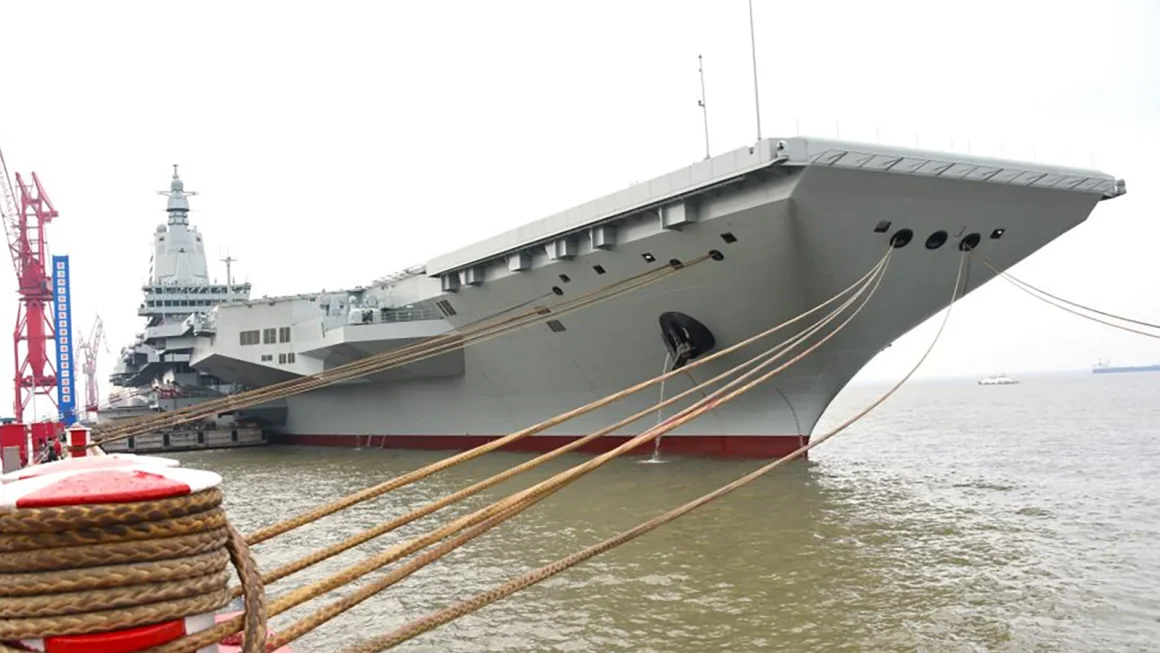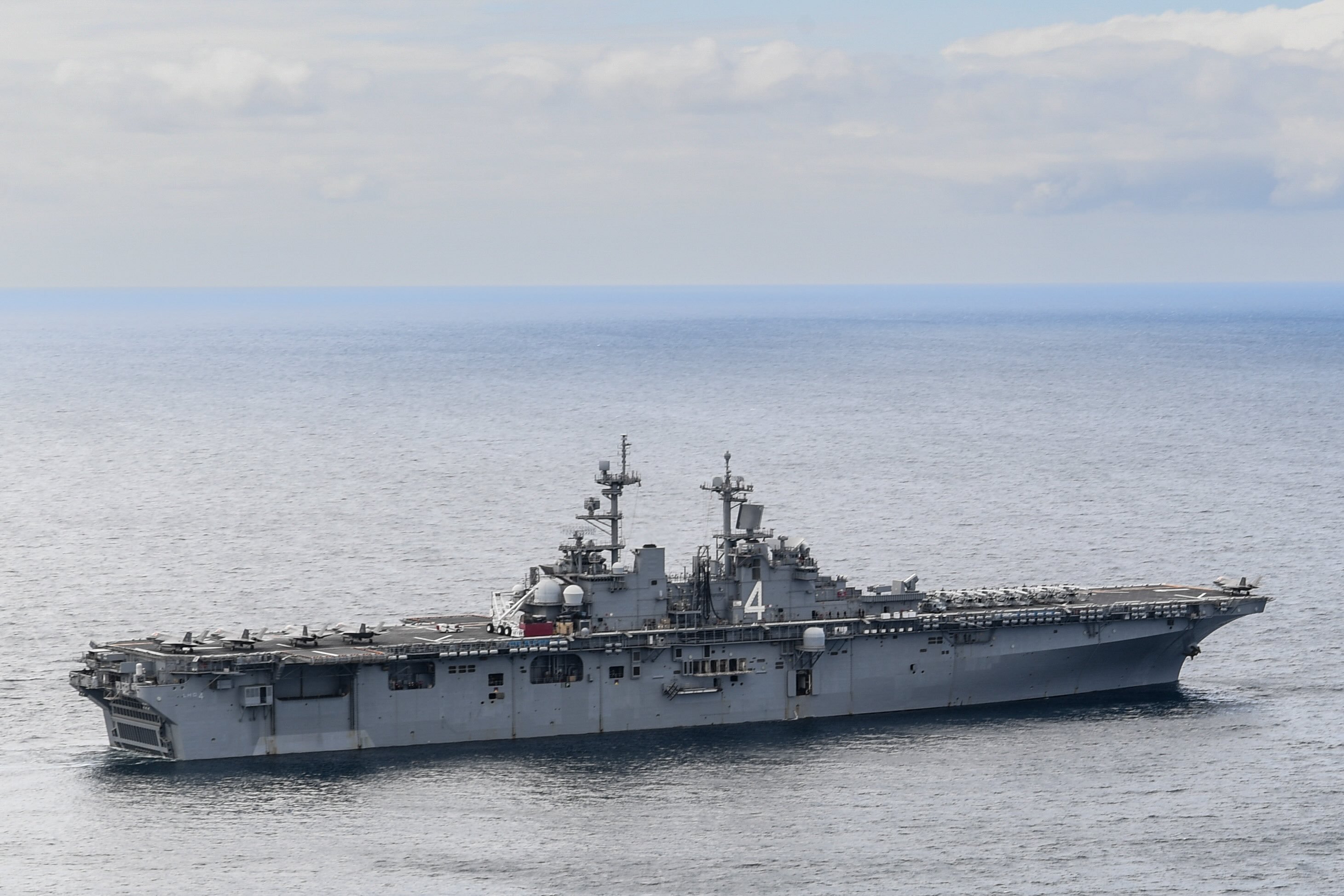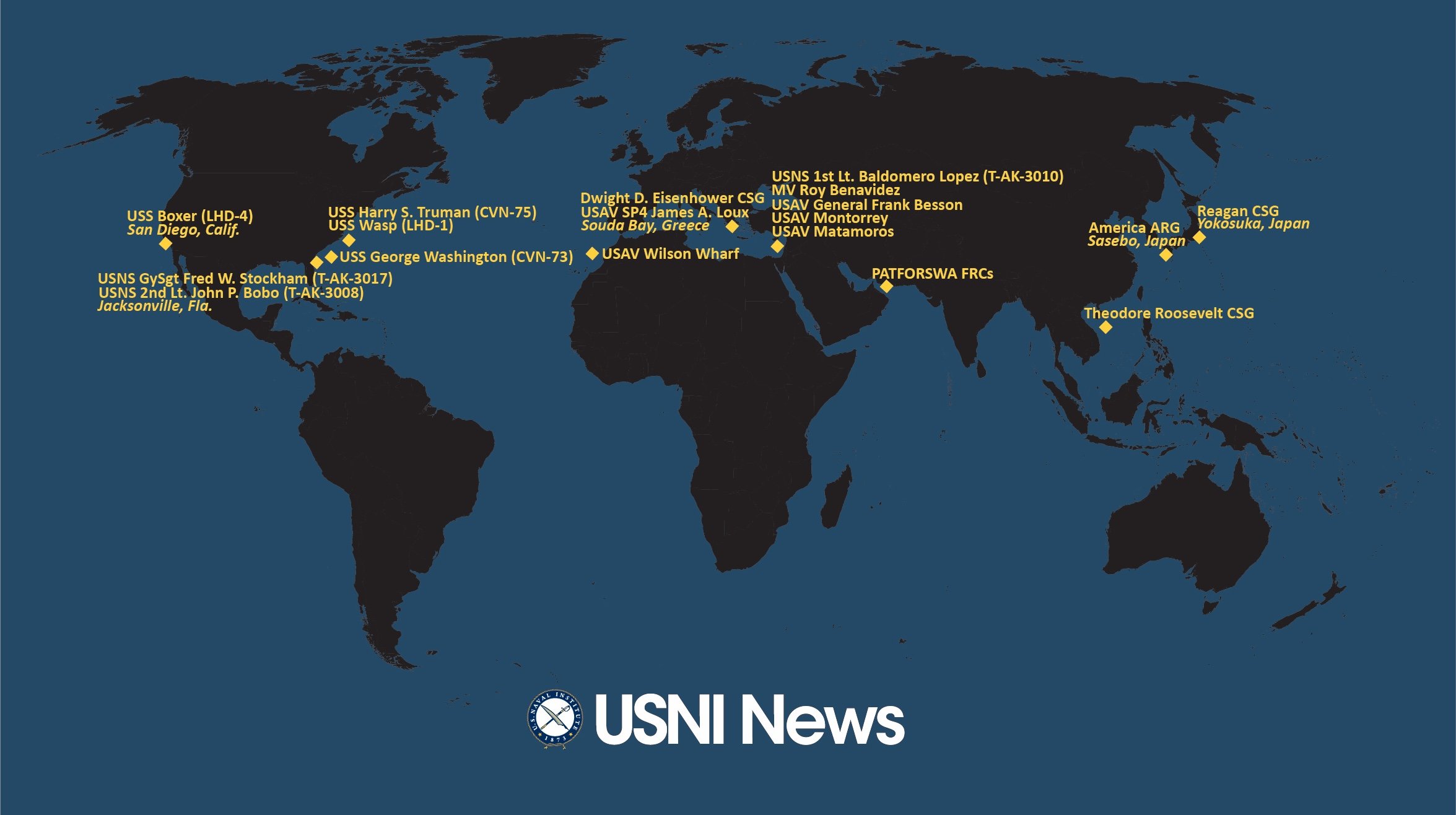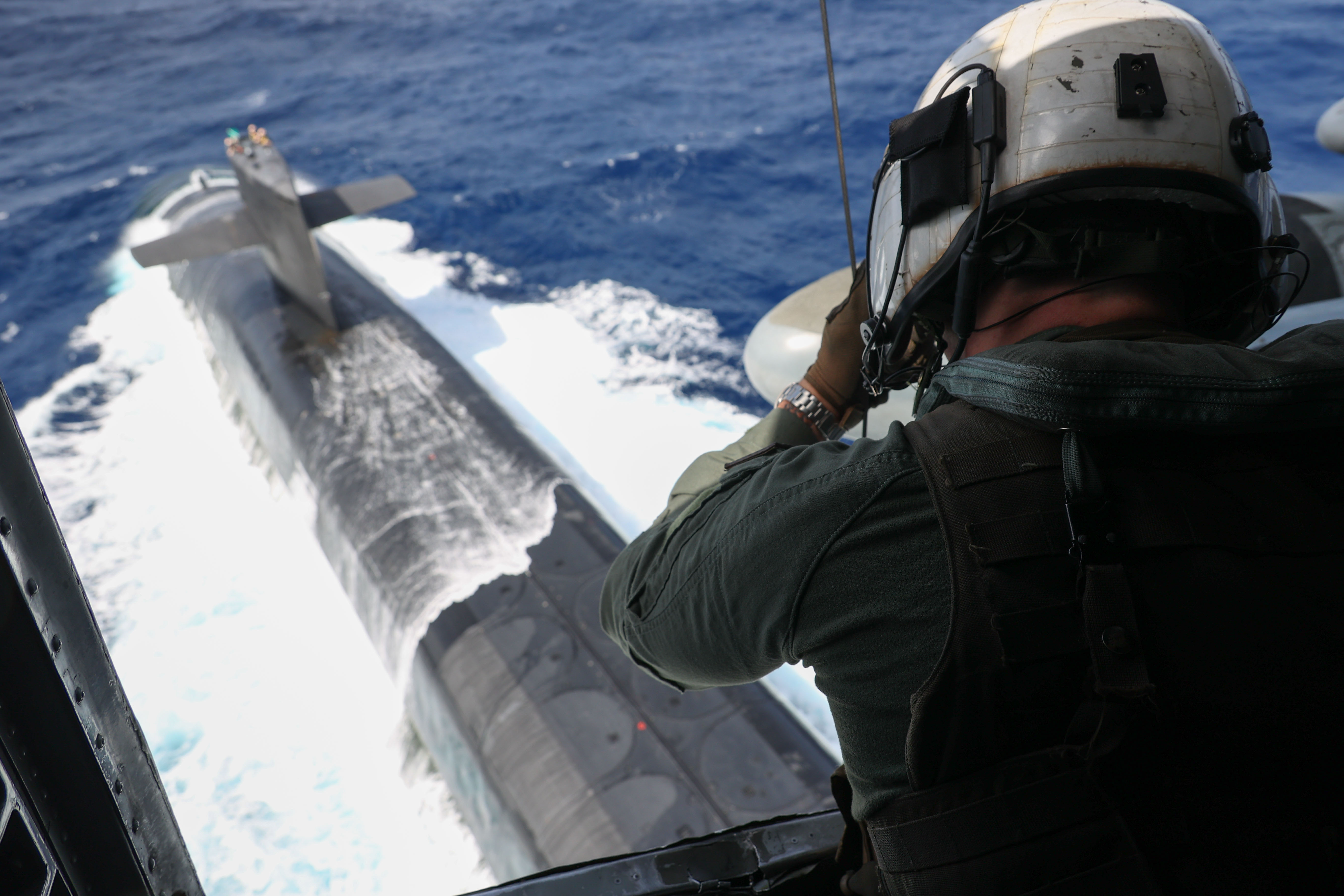
Hauling goods via transport helicopter to replenish a military unit is a routine assignment. Dangling supplies over a ballistic submarine skimming across the Western Pacific is anything but routine.
A pair of CH-53E Super Stallion helicopters made a supply run to ballistic missile submarine USS Maine (SSBN-741) as it traveled in the Philippine Sea. The vertical replenishment mission marked a rare occasion for Marine Corps aviation to lend its hand to support an Ohio-class submarine.
The “Heavy Haulers” air crews of Marine Heavy Helicopter Squadron 462 – based at Miramar Marine Corps Air Station, Calif., but currently assigned to Japan-based 1st Marine Aircraft Wing – conducted the May 9 vertical replenishment mission for one of the Navy’s strategic nuclear weapons-carrying submarines.
”This was the first time that 1st MAW conducted a vertical resupply for an Ohio-class ballistic missile submarine, delivering critical resources without disrupting maritime security operations,” Maj. Rob Martins, a 1st MAW spokesman in Japan, told USNI News via email.
For the Navy, having the Marine Corps’ heavy-lift helicopters perform resupply missions adds to the network of support for maritime logistics across the vast Pacific. As one of the Navy’s ballistic missile nuclear submarines, the Bangor, Wash.-based Maine spends much of its time submerged during its long undersea patrols. The boat’s operations remain secretive.
“The U.S. Navy’s ballistic missile submarine force has demonstrated yet again that we have the proven capability to work seamlessly alongside III Marine Expeditionary Force to execute our mission, allowing us to remain on station,” Cmdr. Travis Wood, commander of the Bangor, Wash.-based Maine, said in a Marine Corps news release about the mission. “Rotary-wing vertical replenishment such as this allows us to quickly resupply so that we can constantly maintain pressure against any adversary who would wish to do harm to the homeland.”
The recent helicopter resupply mission provided training for the aircrews and showcased another slice of how the Marine Corps’ “stand-in-force” deployed and operating in the Indo-Pacific region would support undersea maritime forces in a potential future conflict. The Marine Corps defines the stand-in force as the Marines operating in the first island chain – stretching from the Japanese islands to Taiwan, parts of the Philippines and down to Borneo – within the range of Chinese weapons.
“It highlights the importance of 1st MAW’s established forward presence, which allows us to seamlessly integrate with our naval partners operating in the first island chain,” Martins said.
The beefy CH-53E helicopter’s three engines give it enough internal and external lift capability, enabling it to carry a light armored vehicle or Humvee from a sling load. The platform’s long-running role as the Marine Corps’ king of external lift will be replaced by the CH-53K King Stallion later this decade. How much cargo a helicopter can externally sling-load depends on several factors, such as load weight, distance to the mission, altitude and climate.
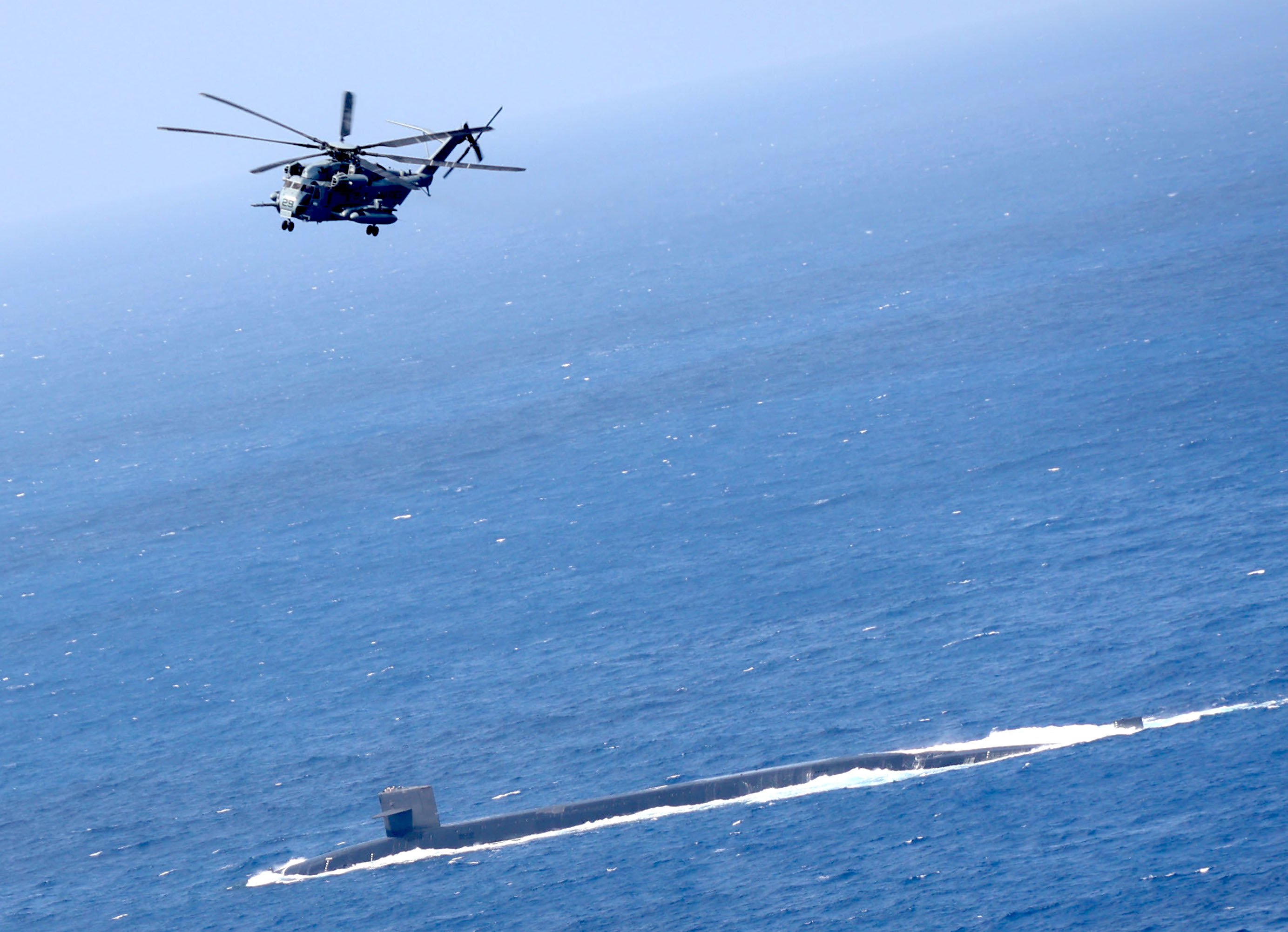
While the CH-53E can travel more than 600 miles on a tank of fuel, its refueling probe stretches its legs and reach much farther.
The helicopter’s in-flight capability enables it to conduct a wider range of missions supporting the “stand-in-force” poised against adversaries in a future conflict in the Indo-Pacific region. In that scenario of the service’s Force Design 2030 modernization plan – which is driving much of the service’s current training focus – SIF units in the first-island chain would operate in the range of Chinese missiles, the place where fighting on land, at sea and in the air would be the most likely.
“The intricacies of seamlessly sustaining the force through naval integration and aviation-delivered logistics is a testament to our adaptability, readiness, and ability to project power within the Indo-Pacific,” Col. Christopher Murray, who commands Marine Aircraft Group 36 in Okinawa, Japan, said in the 1st MAW news release.
As interoperability goes, it’s not every day that Marines get to work closely with the Navy’s boomer fleet. On March 27, 2022, Marines from Task Force 61/2 trained with the surfaced guided-missile submarine USS Georgia (SSGN-729) near Souda Bay, Greece, to launch and recover their inflatable, combat rubber raiding craft. On Feb. 2, 2021, Force Reconnaissance Marines and an MV-22B Osprey with Japan-based III Marine Expeditionary Force joined together for an integration exercise off Okinawa with the guided-missile submarine USS Ohio (SSG-726).


